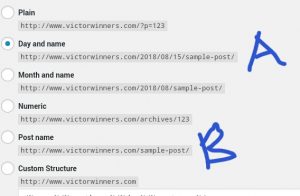Republishing is sweet!
It is the honeycomb of blogging.
Most people switch to republish an older blog post that has a decent traffic. Especially when they don’t have time to write a new article.
I do this myself too.
Sometimes it’s not even because I don’t have time. It could be that the post is doing so well that you decide to build on the traffic it’s generating already.
It’s unfortunate most bloggers don’t know they can republish an older blog post. And get some more traffic.
The few that knows get to do it wrongly.
Only very few people ever republish their old blog post the right way.
Personally, I was one of the former.
The first time I tried republishing my blog post was a big flop. I made a big mistake that cost me a lot.
Instead of generating more traffic, I later realized (upon Google Search) that my article which was already number 3 on Google’s Search engine page for the search term was definitely no where to be found.
After searching the first page, I kept searching until 5th page. I couldn’t see anything.
I was surprised. Because I couldn’t immediately realize what was wrong.
I didn’t know that in my naivety, while updating the post, I’d broken the initial permalinks. (more on this later) for the original post.
This caused me the front page for weeks.
It was after several research that I later got to realize my mistake. In fact at a point, I couldn’t believe myself.
Because I felt I’m supposed to have known that I shouldn’t have tempered with the original post title links in the first place.
Now this is the same mistake most bloggers make when it comes to updating and republishing their older blog post.
That is why instead of getting the right results, most times what folks get is the exact opposite. They end up breaking the site.
Below are certain things to note before republishing an old post:
1. Understand your permalink structure. Your permalinks are web links that connects your blog post and web pages to the search engine.
In order to understand it better, Let’s look at permalink this way…
You have an external light source that gets electricity to your apartment right?
That external source could be a transformer or an electric pole but it definitely links your house to the national grid through some certain wired connections.
As soon as the connection gets cut, you can’t really get any electricity from the pole until it’s fixed.
Now that’s how your blog post’s permalink connects the particular post with the search engine.
As soon as it is disrupted or disconnected, you can’t get direct traffic to the blog through that post.
And for this reason when ever the permalink for any post gets deleted after the post is published, you lose traffic and google ranking for the post.
Because the post automatically becomes inaccessible to the search engine bots and as such cannot be showed on any search result page.
When this happens, you lose your rank.
This is what happened to me.
So you have to understand your permalink structure.
 Look at the picture above. I will classify the most popular permalink structures into structure A and B. And both are marked on the diagram.
Look at the picture above. I will classify the most popular permalink structures into structure A and B. And both are marked on the diagram.
Permalink structure A includes the name of the post and the day of its publication.
While permalink structure B on the other hand includes only the name of your post.
If you choose A as your permalink structure this is a sample of what you’ll have below…
victorwinners.com/07-2018-why-you-must-republish-your-old-blog-post/
If you settle for the Permalink structure B, here’s the likely format you’ll have below
victorwinners.com/why-you-must-republish-your-old-blog-post/
PS: Check your address bar on your browser to find your permalink structure.
Now, for permalink structure B, you can go ahead update and republish your older blog posts without any issues.
PS: Note that you must not change the post slug or permalink of the other post even if you change the post title.
For structure A, whether you’ve changed the poet title or not, you will still need to redirect your older permalink to the one for the republished post.
This is because the new dates you’re republishing the post is what will now be included as the date in the permalink.
This will automatically alter your permalink structure, leading to a break in the process.
So to avoid this break, you’ll have to do a 301 redirect to the new permalink.
The redirection plugin can help with this.
Failure to redirect the permalinks will lead to a drop in traffic as the link gets broken.
On the other hand, the updated post will be seen by the Search engine as a new post and you’ll lose backlinks in the process.
No responses yet